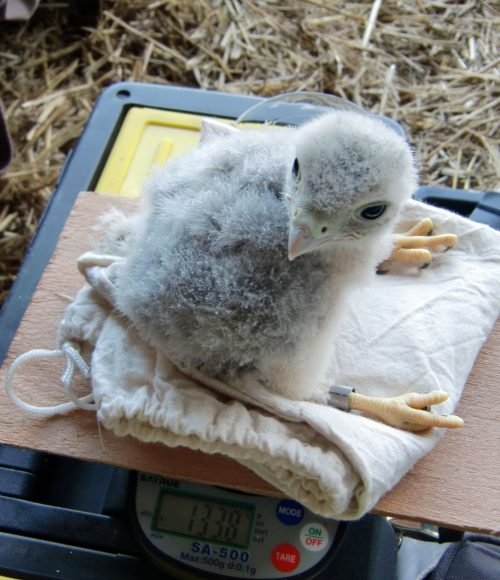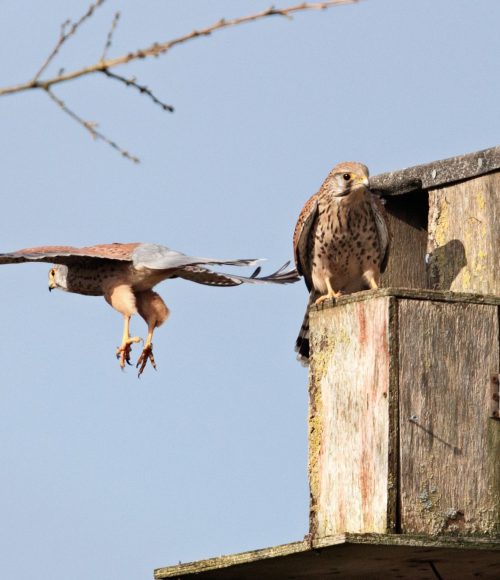
Since the late 20th Century, the population of Kestrels as a whole across the UK has been in decline. Whilst in some areas the number of Kestrels has been stable, in others it has declined significantly. This has led to the Kestrel being ‘Amber-listed’ as a species of conservation concern in the UK.
One of the difficulties with this situation is that the cause or causes of the decline in Kestrel population are not known. Loss of habitat has been suggested, along with decreasing prey populations, agricultural chemicals and lack of suitable nest sites.
Kestrels use both natural locations (such as hollows in trees) and man-made sites (like buildings and bale stacks) as nest locations. Nesting sites may be becoming less available due to factors like damage, destruction or removal of the site, or increased competition from growing populations of other cavity-nesting species, such as Stock Doves or Jackdaws. It is possible this reduced availability of sites like these is having an effect on their population. This limitation can be addressed by the provision of artificial nest sites (nest boxes). Nest boxes can be an effective conservation tool in areas where existing breeding sites are threatened with destruction, or are subject to human disturbance. Where suitable habitat exists, nest boxes can provide additional nesting opportunities for cavity nesting birds of prey. However, the provision of nest boxes is likely to be less effective if there is not enough suitable foraging habitat nearby. An approach combining the protection of suitable foraging habitat along with the provision of additional nest sites is likely to be the most effective conservation strategy.
The Kestrel Conservation Monitoring Project started as part of the Hawk Conservancy Trust’s Raptor Nest Box Project. The project initially aimed to complete an overall assessment of whether the installation of nest boxes across the landscape affects Kestrel population density. The study area covered an area of 2240km², centred in Hampshire but also extending into Wiltshire, Surrey and West Sussex and was divided into eight 280km² (20km x 14km) blocks. Within this study area, 100 nest boxes were installed in suitable locations at regular intervals across the landscape.
The project has since developed to also monitor breeding productivity and the effects of over-winter mortality, in addition to assessing changes in density. In combination, these will lead to a summary picture of how the breeding population changes over time. There is also potential to assess changes in the distribution of Kestrels across the study area, and if this is related to changes in environmental factors. This project has further expanded in 2025 to include work to identify hunting ranges of adult Kestrels during provisioning. This assessment will use GPS tags to provide a baseline for their hunting and home ranges prior to significant landscape improvements and conservation initiatives.
There are now about 450 nest boxes installed for Kestrels through the Trust’s Raptor Nest Box Project, which are monitored for use and productivity during both the winter and breeding seasons; any young produced in the nest boxes are fitted with BTO metal and colour rings for identification.
Detailed surveys for Kestrels (and other species of bird of prey such as Red Kites and Buzzards) are performed using a line-transect survey methodology and recording the birds that are seen. The surveys are completed twice each year (in autumn and spring) to estimate densities both before and after the breeding season.


Overall, the outcomes from the project will help us to assess how Kestrels respond to landscape-level conservation projects, which will aid us in understanding their behaviour, population number and distribution, and how these elements are affected by changes in the UK environment. Ultimately, we expect this project to contribute towards identifying the reasons for Kestrel population decline and steps to reduce and reverse this.